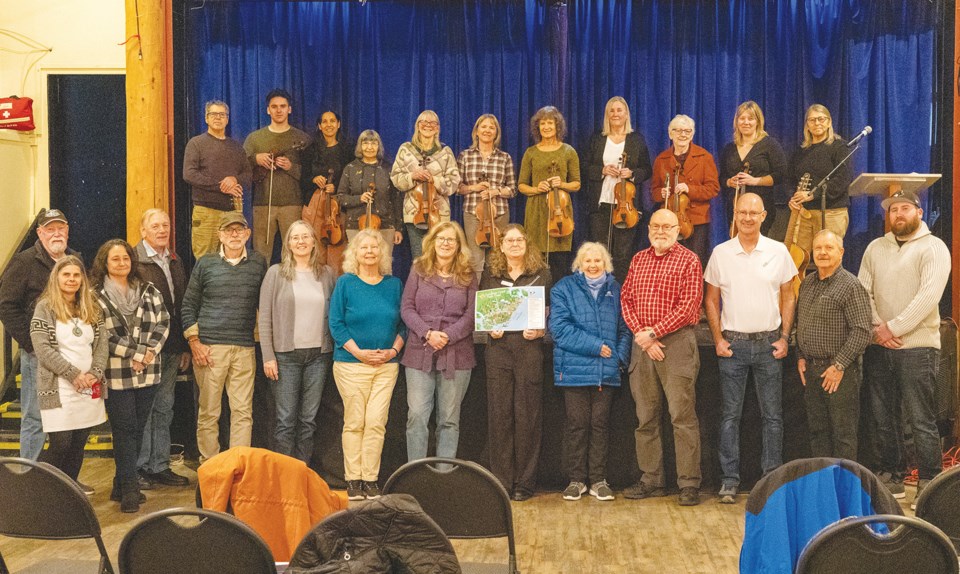The nine-decade history of xwesam-Roberts Creek Hall provided the backdrop for a gathering last weekend that plunged into the deep literary currents of the Sunshine Coast.
The venerable structure, originally known as the Roberts Creek District Hall, was officially opened on May 24, 1934. Pioneer photographer Helen McCall documented the occasion, which included live music and a dance.
The 90th anniversary gathering on Nov. 10 attracted more than 50 attendees for an event coordinated by the Sunshine Coast Writers and Editors Society. It was the first in a series of community launches for the society’s Tale Trail initiative, which catalogues and publicizes writers affiliated with the southern Sunshine Coast.
“For me, it’s a literary heritage project,” explained novelist Jan Degrass. “What it’s really about is honouring the writers from our Coast, some of whom are no longer alive.” Degrass served as the lead researcher for the project, ultimately producing a list of 200 authors, poets and publishers who lived, worked or appeared in local settlements.
“Who were they?” she mused. “What did they write? And how were they inspired by their surroundings?”
Degrass’s involvement was partly inspired by a onetime meeting with historian (and high school teacher) Lester Peterson, who produced The Story of the Sechelt Nation in 1990. Peterson’s knowledge stemmed from personal connections and conversations with members of the shíshálh Nation. “That’s what I wanted to do here with this literary heritage project,” said Degrass.
The region’s literary profile was also raised through the work of professional writers and editors like Betty Keller. One of her books, Pender Harbour Cowboy: The Many Lives of Bertrand Sinclair (published in 2000), told the story of novelist Bertrand William Sinclair, whose frontier tales were set in the U.S. and early B.C. The Edinburgh-born Sinclair died in Sechelt in 1972 after producing almost two dozen books and screenplays.
Author Heather Conn acknowledged the influence of best-selling writer Muriel Wylie Blanchet, whose travelogue of 15 summers sailing the length of B.C.’s West Coast — The Curve of Time — was released in a new expanded edition by Harbour Publishing this year. Blanchet died in 1961, the year of book’s first printing, and never lived to see its monumental success.
“For anybody who’s a boater on the Sunshine Coast, this book’s considered a classic,” observed Conn, who read aloud several descriptive passages from Blanchet’s book. She also acknowledged Blanchet’s limited understanding of Indigenous culture: “It was a common perspective that [First Nations villages] belonged to ancient peoples, something in the past that had nothing to do with the modern day, which of course is not true at all.”
Historian Phil Cunnington provided a chronology of original land preemptions in the Roberts Creek area, and described the long-lived influence of the Roberts family. Will Roberts was at the vanguard of the clan’s migration to the creek’s foreshore, emigrating from Redditch, England in 1889. Will’s nephew Harry, a later settler, was himself a painter and author.
The Low-Key Fiddlers, a string and guitar ensemble under the direction of Tegan Ceschi-Smith, performed three sets of tunes with origins rooted in Métis traditions, the Shetland Islands, and Québecois culture.
Novelist Caitlin Hicks (author of Kennedy Girl) and poet Joyce Gwilliam (whose verses appear in the society’s fall anthology, Not An Island) also presented short readings from their works.
Other upcoming community Tale Trail events will be announced via the website of the writers and editors society: scwes.ca.



